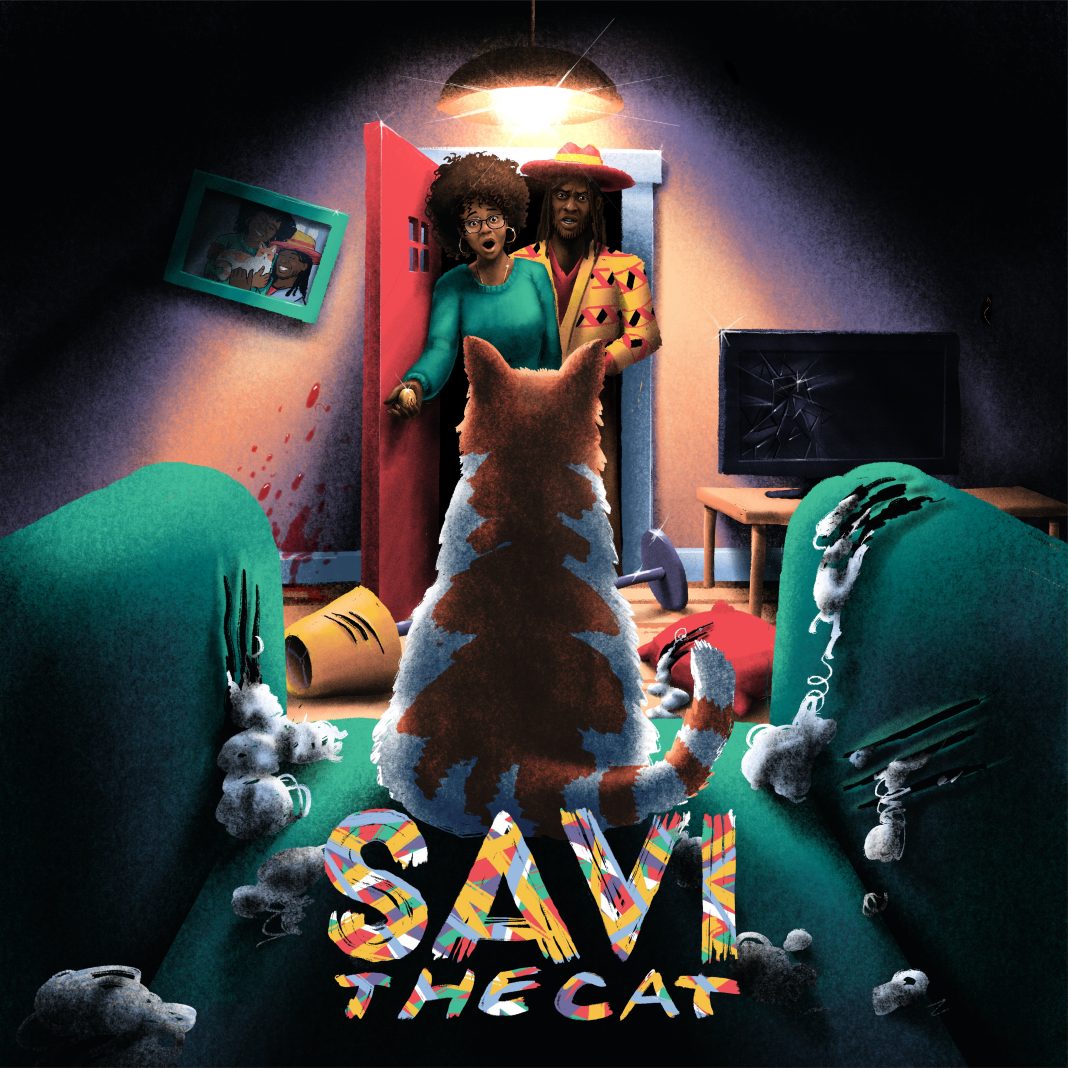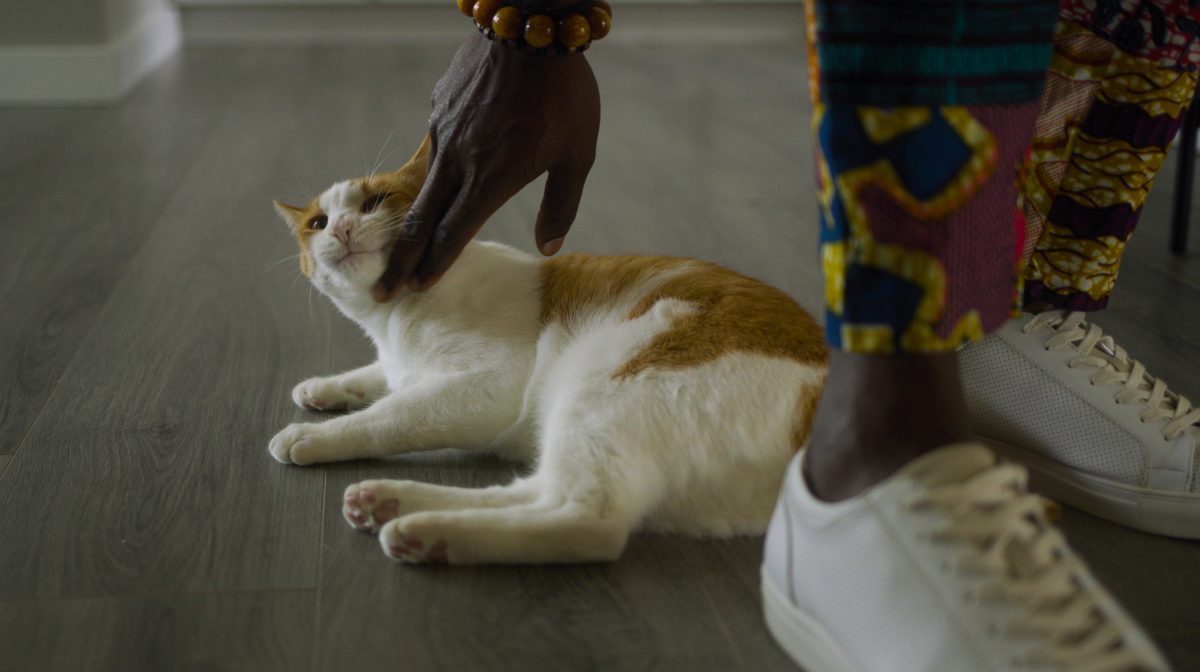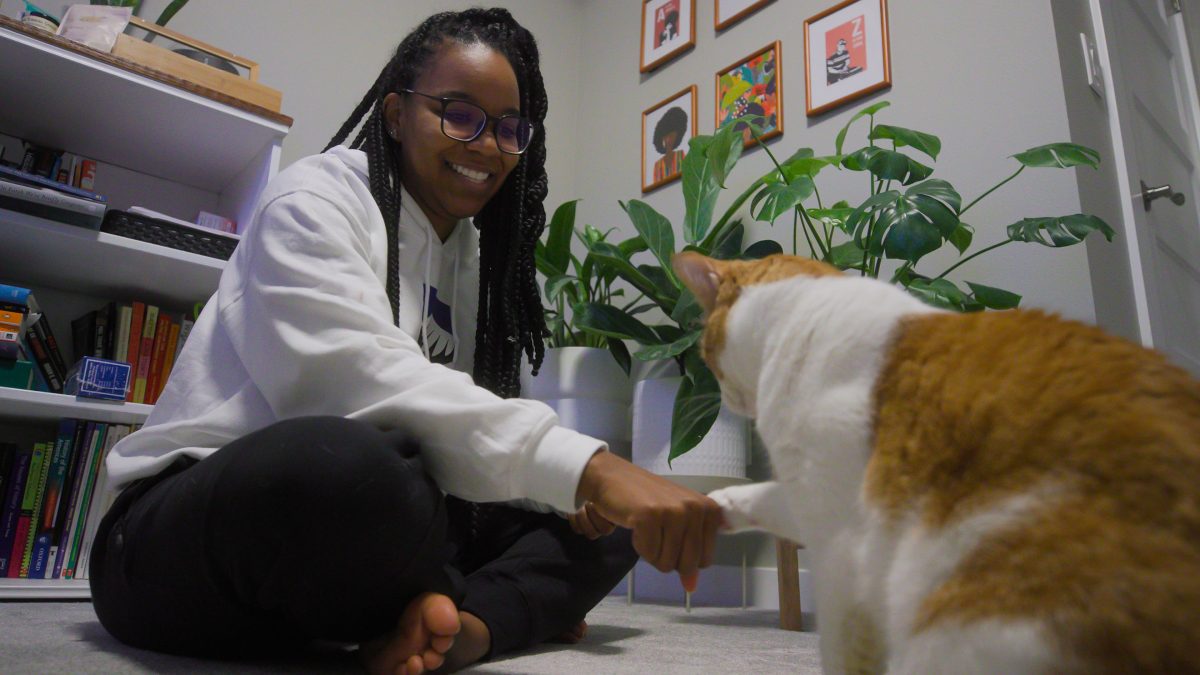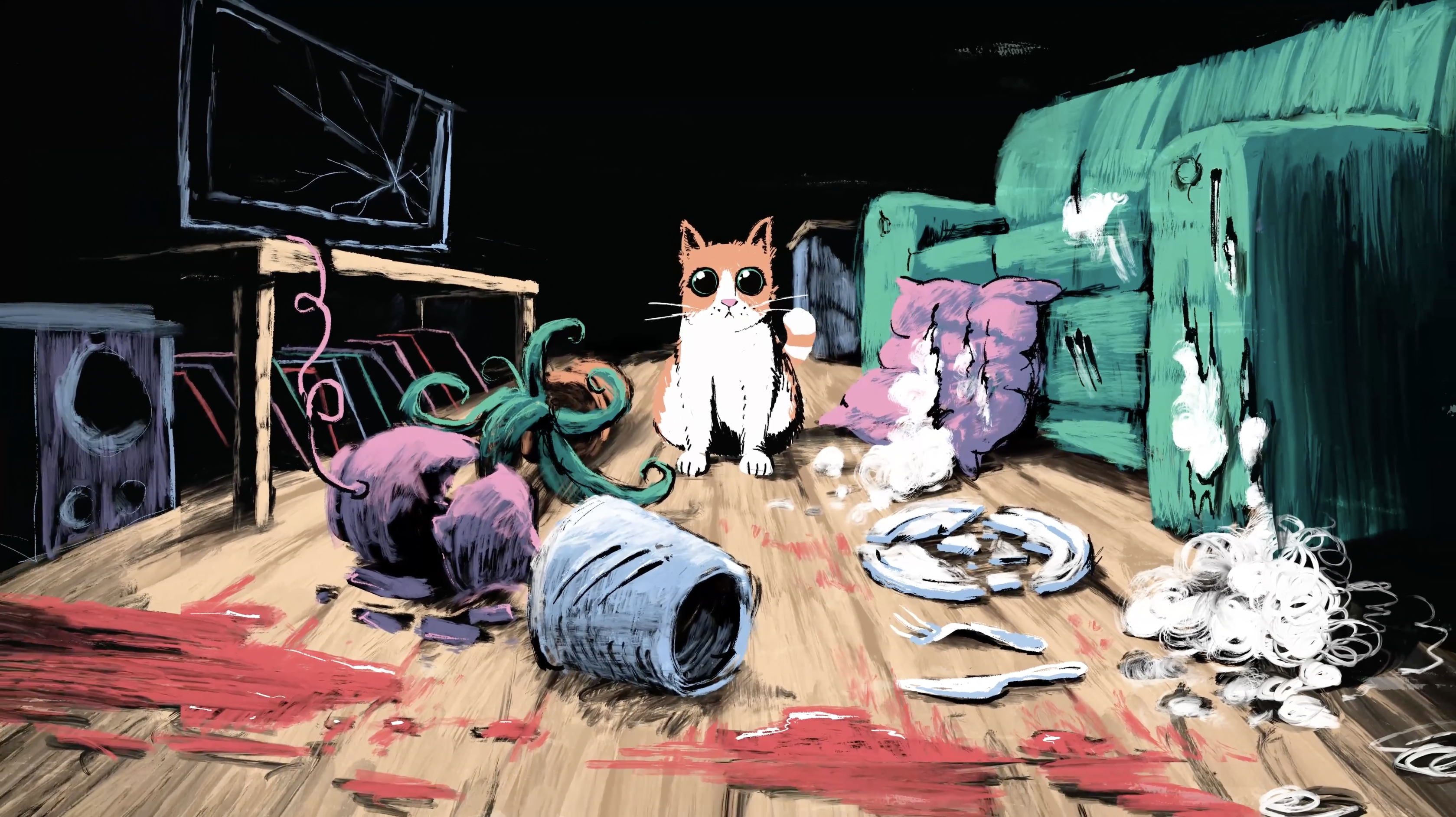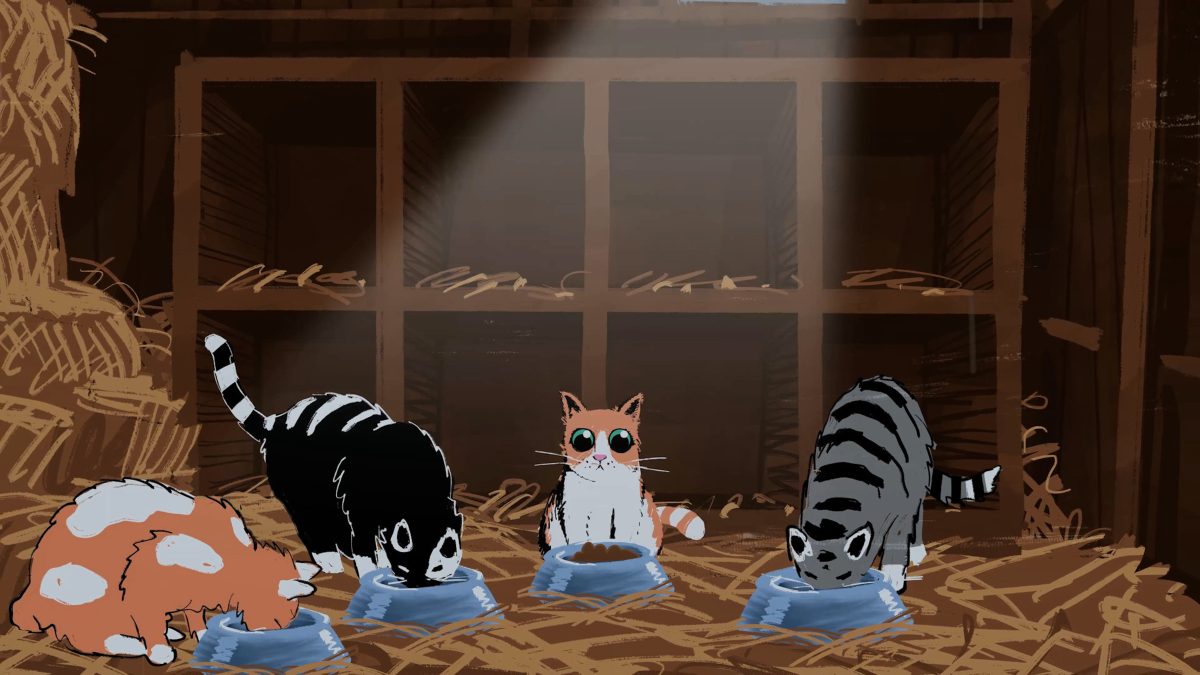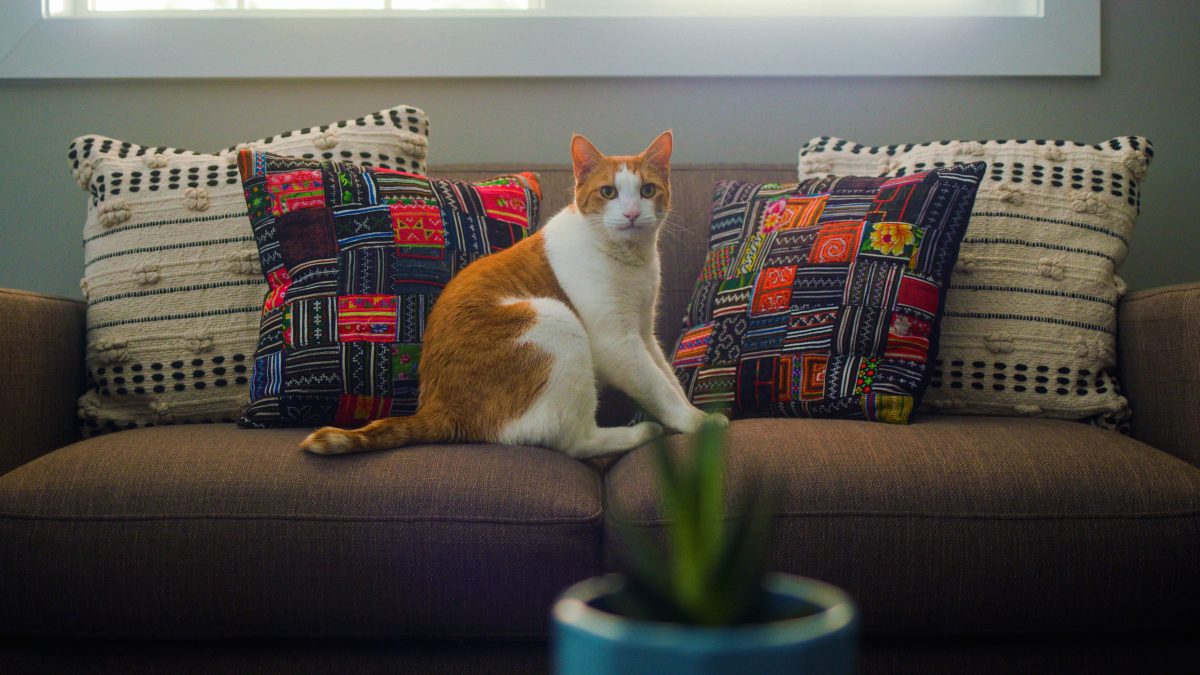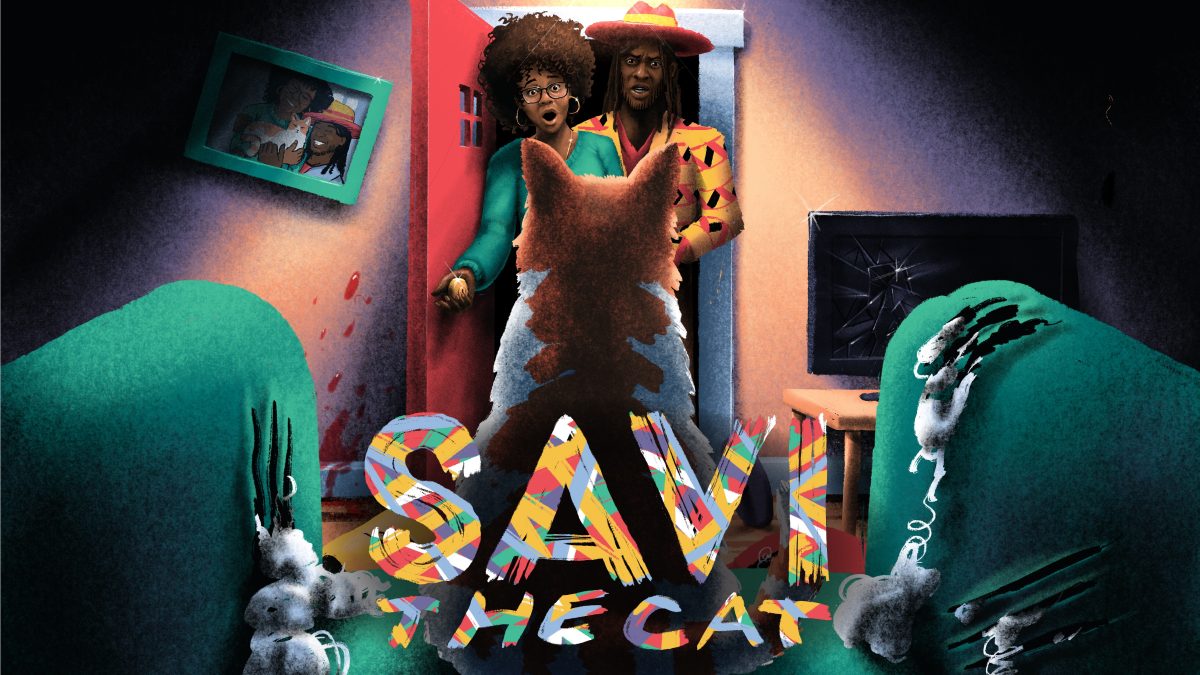The affection and bond between a happy couple and a cat which they adopt comes to the fore in Bryan Tucker and Netsanet Tjirongo’s new short film SAVI THE CAT.
Film And TV Now spoke with the film-makers about the short film.
FILM AND TV NOW: The film is keen to stress the dynamic between human and pet. What was the start-off point for the short?
BRYAN TUCKER: I have been friends with Ken for 14 years, and he’s always made me laugh.
One day he told me this story over the phone about their cat (I’m keeping this vague so as not to give any spoilers!) and I immediately told him I wanted to make a short film about it. The way he told the story was so funny, but that’s all I really knew at the time.
I invited Netsanet to join me in doing the first interview with Ken and Kaila, because I knew she would get a kick out of the story. But since I hadn’t heard Kaila tell the story yet, I didn’t know what to expect.
We decided to interview them together in their home, and Netsanet and I were absolutely blown away by how funny, heartfelt, surprising, the story was. As we got into our cars to leave, Netsanet and I both said to each other, “This is gonna be an amazing film.” But we knew we would need a great animator to pull it off.
NETSANET TJIRONGO: Bryan gave me a call and told me the story and I was sold. I remember saying that this was a love story in the shape of a cat story.
I had met Ken and Kaila a few times before and was excited to get started on the story but I knew we had something special when Ken and I were sitting outside, waiting for dinner to arrive and I asked him about his childhood experience with cats. The answer surprised all of us. (Being as vague about this as possible)
When we started the interview in earnest, Kaila talked about her upbringing with cats and what made certain decisions especially hard. Even though we eventually had to cut these elements from the story, what never changed from day one was that our story had depth, levity, and lots of love.
FTVN: As we all discover, those of us who own a pet at some point in our lives, cats are never straightforward. What fascinates you about them?
BT: Cats fascinated me because each one of them is so different. It makes it fun when you can actually win over a cat, where they want to spend time with you. I have an old cat who’s sort of like a dog and follows me around everywhere. But Savi was pretty much a feral cat, and sounded like a nightmare early on for Ken and Kaila.
NT: As a lifelong cat-person who is deathly allergic, I think I’m always reading something about them. One story that is very relevant comes from Australia. The first Australian house cat arrived with the colonists.
At some point, people let these cats out into the wild and somehow they survived and evolved. Now they’re pushing several species to the brink of extinction. Thinking about Savi and his distant Aussie cousin’s penchant for survival and destruction, I can’t help but be glad that these critters are as small as they are.
FTVN: Where did you shoot and for how long?
BT: Everything was filmed in Seattle, WA, in the house where Ken and Kaila live.
The animation however takes the viewer all over the Seattle region. The very first thing we filmed was the principal interview of Ken and Kaila, which you see in the film. It was originally supposed to be an “exploratory” interview, where Netsanet and I could finally hear how Ken and Kaila tell the story, so that we could transcribe it and put together a paper edit.
The idea was always that the entire film would be animated, but their interview was so engaging and so funny that we decided to use a majority of it in the final film. That interview was done in May 2021, and we only did 3 full days of filming after that.
NT: We shot entirely in Ken and Kaila’s home in the suburbs of Seattle, WA. We shot our main interview in one night with the intention of having that being our exploratory interview.
Even in the room, their energy was kinetic; this was not something that we could replicate. They played off of each other, they discovered parts of the story with the audience–it was everything we could have hoped and more.
FTVN: How much of a challenge, given Savi’s nature, was it to capture movements on camera?
BT: The majority of Savi’s narrative arch in the film happens through animation, so it wasn’t as much of a challenge for me to film him in the few live-action shots that you see in the film.
Even in those shots, I did have to wait until he forgot I was in the room in order to capture those cute moments. But I was also surprised at Savi’s ability to do little tricks for Kaila, in exchange for a treat, of course.
NT: Savi is a lot more chill now, especially when Kaila is around. Do we detect a future in show business ahead for a certain feral feline?
FTVN: Who and what are your key cinematic influences?
BT: For narrative films I’m a huge Jordan Peele fan and for documentary I’m always mesmerized by Matthew Heinman’s work, because they feel like narrative films, because they are so beautifully shot even in incredibly dangerous situations. -BT
NT: First and foremost, I wouldn’t be a filmmaker if it weren’t for bell hooks. I’ve always been obsessed with film but I never had any idea that I could, nor that I should make them.
In terms of influences, as a teenager, I was always worried about people understanding my perspective, especially in the US, so when I first saw an Alfonso Caurón or Wong Kar-Wai film, I started thinking about storytelling differently. Specificity is the key to creating stories that people actually relate to.
In terms of documentary, as an Ethiopian and a Namibian born at the end of the Apartheid regime and the height of the AIDS epidemic in both countries, I have a complicated relationship with the genre. I think it’s essential that we tell stories like this (Savi) because there’s so much joy in our existence and catching a few frames of pain doesn’t negate that. Oh no! Can we have cinematic antagonists?
FTVN: Would you like to explore other animal subjects in future work?
BT: As much as I love animals, I wouldn’t say that I plan to seek out stories about animals in the future, because for me it has to have some human element that keeps me interested.
For Savi the Cat, Ken and Kaila are what kept me excited about that story. Even after editing for hundreds of hours, I still laugh and feel emotion all throughout their time on screen.
NT: Absolutely! I think generationally, millennials and gen z, for a whole host of reasons, many of them out of our control, are choosing to be pet parents and not human parents.
Just like Ken and Kaila, I think they’re the stress test of any relationship; I know more than one person with a custody agreement for their pet. I’ve also seen how important pets can be to my friends with mobility issues, not necessarily for day-to-day help, but for companionship.
FTVN: Bryan, you are an established documentary film-maker throughout the Pacific Northwest. What are your key criteria for subject selection?
BT: There so many stories I hear where I have this initial gut reaction of “I want to tell this story.” But once I start asking more questions and putting more thought into what the arc of the story is, sometimes there are key elements missing and I have to move on to something else.
What I initially loved about Savi was that it was a funny story with an unbelievable ending. But it wasn’t until we dug deeper and found out of these other little twists to the story, and these surprising throughlines and moments of emotion and conflict that I got really excited about what the film could become. It’s a great feeling to find a story with many layers to it.
FTVN: Netsanet, you gravitate towards subjects around gender, immigration, race and sexuality. What issues and themes are you keen to explore in future work?
NT: I explore these issues and themes in my work for two very specific and perhaps selfish reasons. One, they affect me and the people I care about and two, I’ll continue to elevate these issues until people in these communities get the rights that they deserve
I’ve been working on a script that takes place during an Ethiopian wedding. I’ve always been taken aback by the elegance and spectacle of your standard Ethiopian wedding which is never just a one-day affair. You’ve got play-fights, outfit changes, every night ends in a massive dance party, honey wine, and the best food you’ve ever eaten. That script deals with issues of gender, immigration, race, and sexuality.
FTVN: Would you like to work on more narrative-based films based around pets?
BT: That sounds fun, but difficult! I’m always open to any ideas if the story is compelling and authentic.
NT: Absolutely! I think generationally, millennials and gen z, for a whole host of reasons, many of them out of our control, are choosing to be pet parents and not human parents.
Just like Ken and Kaila, I think they’re the stress test of any relationship; I know more than one person with a custody agreement for their pet. I’ve also seen how important pets can be to my friends with mobility issues, not necessarily for day-to-day help, but for companionship.
FTVN: Your film was selected from 8000 entries into the Tribeca Film Festival. What are some of the provisos for submission into this festival?
BT: I cannot pretend to know how or why we were accepted into the Tribeca Film Festival. What I do know is over and over people who’ve seen the film are pleasantly surprised by the humor, the drama, and the humanity of the story. It seems to be a breath of fresh air for most viewers, mainly because of how relatable Ken and Kaila are as characters.
NT: My first born son will be named Tribeca. Honestly, I applied for Tribeca just like I applied for every other festival. I think we knew our story was special, we knew all the parts were there, but getting the call from Tribeca was confirmation. The real secret to our success is Ken and Kaila (and Savi), and their willingness to be unapologetically themselves on camera.
FTVN: Finally, what are you both most proud of about this short?
BT: proud that we took a great story, and told it in an innovative way, using a combination of animation, live-action, “talking head” interview, and archive materials.
I’m proud to make a story about an amazing couple in Ken and Kaila, who are so much fun to watch and learn from. It’s always important to really love film projects because they are going to take a lot of your time from start to finish, and I never got tired of working on this film.
NT: More than anything, it felt important to tell this story when we started this project in August of 2021. In the wake of 2020, it felt necessary to focus on the ways that black folks were living rather than the alternative.
So when we started working on this project, it was essential to me that certain elements, specifically the animation and the way that the story was crafted was able to both honor Ken and Kaila’s unique style and perspective. Savi is a very specific story about a Kenyan man and a Black American Woman and their feral cat.
It’s almost too specific. Yet the response has been resoundingly positive. I’m proud that we made a film that is unapologetically about Black Love and life that people are responding to


